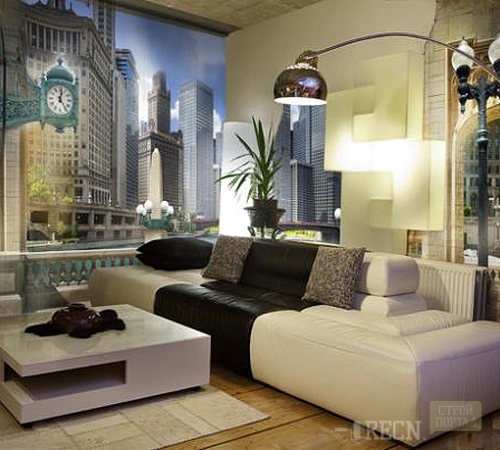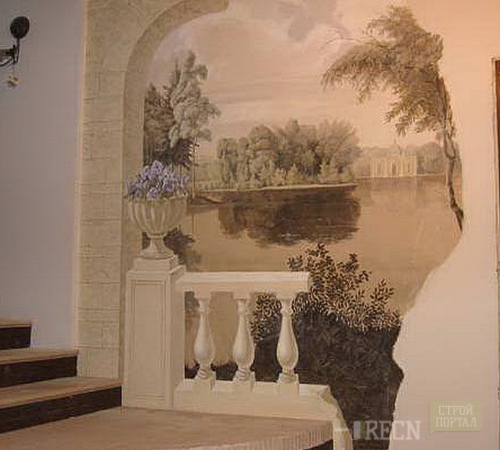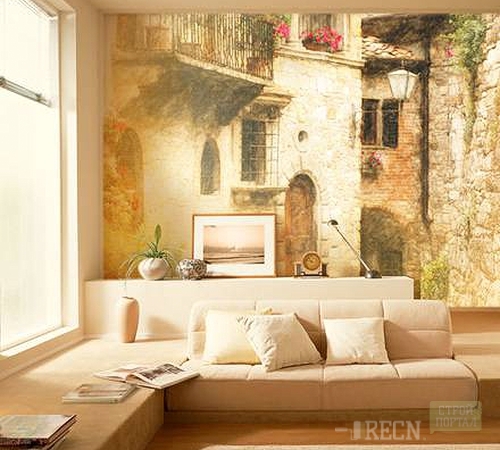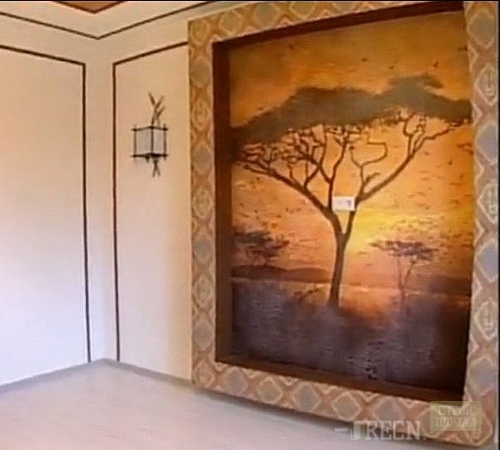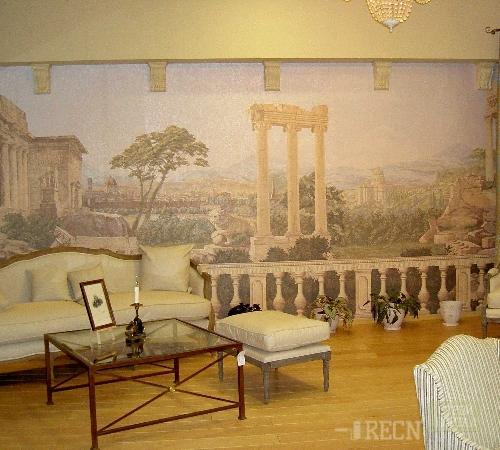How to update the design of the living room, but not to do overhaul? The best option for solving this problem is frescoes. The technology allows you to transform any room beyond recognition and create an atmosphere of comfort and luxury in it. There are a lot of ways to apply drawings to the walls, as well as tips for using frescoes in the interior of the apartment. Consider the best of them.
Content
Varieties of frescoes
Initially, the fresco implied the technology of applying the pattern to wet plaster. After its drying, the drawing was covered with a protective film that made it durable and resistant to burnout. Over time, the term transformed and began to denote any painting on the walls.
To date, there are three large groups of methods for applying frescoes:
- natural colors,
- decorative elements,
- pre -prepared drawings.
Classic frescoes
The most beautiful and expensive frescoes are drawn with oil paints, they turn an ordinary wall into a work of art. But, only a professional artist who specializes specifically in frescoes is able to perform such work, since the technology is very different from drawing on canvas.
In some cases, watercolor paint is used. They easily fit on the surface and anyone who knows how to draw at least a little, will easily do this work. Watercolor frescoes need to be treated with varnish, otherwise the colors will quickly lose their color. In some cases, frescoes are performed by acrylic, this is relevant if you want to see your living room in the style of futurism.
Art Deco frescoes
Frescoes for the living room with decorative elements appeared not so long ago, but quickly became very popular. Basic techniques:
- sand mural,
- craquelure,
- mosaic.
The sand methodology is called quite conditionally, since in fact, the sand has nothing to do with work on the fresco. Nevertheless, the drawing made in this style distinguishes from others an extraordinary radiance, especially in artificial lighting. This effect is achieved quite simply, either in plaster or bright sparkles are added to the paint. It is advisable to choose them under the overall color scheme of the future drawing. By the way, the addition of sparkles to plaster is used not only for frescoes, but also in the design of the entire room. As a result, with bright sunlight or electric lighting, the surface of the walls will shine brightly and shimmering delighting you and surprising the guests. Despite the apparent simplicity, the technique is not common and is a curiosity in domestic construction practice.
Krakelyur is a more ancient way to create original wall painting. Instead of sparkles, marble crumbs are added to the plaster. After drying, the drawing is “aged” and cracks, but the surface remains perfectly even without a single flaw. Although the frescoes made in a similar style look quite spectacular, in everyday life it is suitable for only a few design solutions, such as Boz-ar, high-tech and Empire. This is due to the fact that the craquelure in simpler solutions is a too bright spot that creates a contrast with the rest of the interior.
Another interesting solution is the use of mosaic elements in the figure. It manifests itself in two types:
- decorative,
- rolny.
Decorative mosaic implies the application of a regular pattern on the wall, which is made in the style of mosaics and consists of separate, multi -colored elements. It looks quite original, but not as spectacular as a real mosaic. To create it, individual elements of the picture are replaced by colored glass, which is mounted directly in the plaster. This combination is common in England, but beyond its borders it is extremely rare.
Frescoes on pre -prepared drawings
Today it is the largest group, which is represented by the following technologies:
- stencil,
- non -woven fresco,
- elastic fresco,
- canvas,
- digital printing.
Frescoes in the living room with stencils are most often made. The work is very simple, does not require special skills, and a rich palette of stencils allows you to choose absolutely any solution. Nevertheless, stencils do not allow creating anything truly original, in addition, the area of \u200b\u200btheir application is very limited. Suitable only for small living rooms or as additional decorative elements.
Flosebine frescoes are akin to the wallpaper. Only instead of boring monotonous coloring, a certain pattern is applied to the top layer of paper. Do not identify this concept with photo wallpaper, since manufacturing technology is fundamentally different. The non -woven frescoes are glued to the wall using ordinary wallpaper glue, the average width of the canvas 1 m.
Elastic fresco appeared recently, but has already become very popular thanks to its own unusual appearance. The drawing is created using plaster, which is applied to a fiberglass grid. This technology allows you to mount frescoes on absolutely any surfaces, it is especially true for the corners and places of fit (ceiling) to the wall.
Inventive Italians in the sixteenth century came up with saving on the services of incredibly expensive, at that time, masters-murals, and replace the painting of raw plaster with an ordinary host. Installation is quite simple:
- a wooden rail is attached to the wall along the upper and lower edge of the canvas,
- on it, like a lighthouse, plaster is done,
- then the canvas is pulled on the rails,
- the edges of the picture are covered with plaster.
Such paintings must be opened with varnish, otherwise they burn out in the sun.
Digital printing or murals is already a finished picture that just needs to be glued to the wall. This is the cheapest and simple option, it looks in comparison with a real fresco, respectively. The canvas is made both solid and separate rolls.
Frescoes in the interior of the living room
The use of frescoes is possible everywhere, it can be both a separate art object and a whole gallery. This element alone is enough to completely transform the room. But, if you want to achieve the maximum effect, then the placement of frescoes must be suitable as much as possible.
Designers advise several concepts:
- global design,
- the central element of the interior,
- separation of the zones of the living room.
In the global version, frescoes in the interior are used on all walls, making up a single monolithic painting. This approach is especially relevant for large living rooms, where the abundance of drawings will not create discomfort. For such a design, it is appropriate to choose specific plots, it can be:
- batal scenes,
- lovelife landscapes,
- art versions of various literary works.
Compliance with the storyline is the guarantor that frescoes will perfectly fit into the interior and will delight you.
For small living rooms (less than 20 sq. M.) This method is not suitable, since the grandeur of its scope does not correspond to the area. Therefore, the frescoes will annoy and look caricatured.
As a central element, only one drawing is issued. The place is chosen so that it is clearly visible from anywhere in the room. The fresco should be made as brightly and spectacular as possible, on the verge of shocking. This is manifested both in the choice of topic and in the technique of execution. The dimensions, at the same time, do not matter much.
Frescoes on the wall in the interior are often used to select or divide various zones of the living room. One of the walls is designed by the pattern. In addition to the fresco itself, it is necessary to correctly think over the design surrounding it. Depending on the topic of the picture, it can be:
- decorative stone,
- vases with flowers,
- forging elements,
- fireplace,
- home cinema.
The choice of the option depends solely on taste preferences and fantasies, since in fact any fresco is very luxurious and spectacular.

